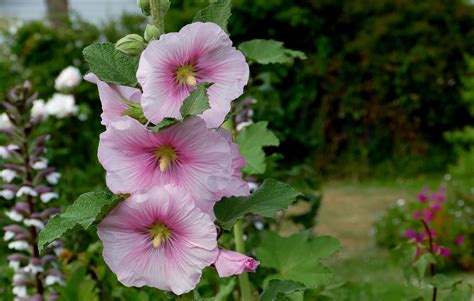Hollyhock Plant. Hollyhocks are easy to grow and their blooms come in a wide range of jewel colours, flowering from early summer to autumn. You can plant hollyhock seeds in the later months of summer to enjoy blooms the following summer.

Hollyhocks ( alcea rosea ), with their predominant stems of brightly coloured, double blooms, stand tall amongst the rest of the garden from spring to summer. This biennial or perennial plant originally comes from asia and europe. It also has the common names as garden mallow, garden hollyhock, and common hollyhock.
This Will Also Promote Better Air Circulation And Drainage.
Cottage garden stalwarts, hollyhocks are easy to grow from seed and will often obligingly seeding themselves around the garden. Hollyhocks are old garden favorites dating as far back as the 1500s in britain. Their tall spires look good grown against walls and fences and are stalwarts of cottage gardens.
Typically, Hollyhock Plants Take About A Year To Grow From Seed.
Tall, 1 to 2 ft. Typically biennial, allow seeds to fall and the clump will persist for many, many years. All parts of the hollyhock plant have been used for natural remedies.
Black Flowers Yield Anything From Pale Lavender To Dark Purple Dye.
This garden flower will bright blooms throughout summer. Hollyhocks are versatile plants, and most can grow in any soil type. Hollyhocks need full sun and moist, rich, well drained soil.
Hollyhocks Can Be Cut For Bouquets And You Can Even Add The Petals To Salads Or Crystallise For Cake Decorations.
It also has the common names as garden mallow, garden hollyhock, and common hollyhock. The lofty spires on our hollyhock plants are covered with large frilled flowers in beautiful colors. Hollyhocks are a suitable gift for housewarmings, promotions, graduations, and birthdays.
Spacing Will Depend On Variety.
The several varieties include annual, biennial, and perennial forms. Tie them to a stake such as a bamboo cane, in exposed or windy gardens. In fact, these two plants share similar chemical constituents.
